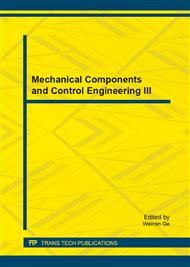p.437
p.441
p.445
p.450
p.454
p.458
p.462
p.466
p.470
Application of Hybrid Petri Net in Modeling of the Energy System in the Iron-Making Process
Abstract:
Energy model is an important part to research energy system of iron and steel enterprise and the basis of energy saving. Based on the analysis of iron steel enterprise production process, material and energy employed in the iron-making process were extracted. According to the hybrid characteristics of energy systems in iron and steel enterprises, the hybrid Petri net was used for modeling material and energy of the iron-making process. The MATLAB simulation with the stateflow toolbox based on hybrid Petri net was given. The model was proved that it was able to provide further support to energy conservation and control in the actual production.
Info:
Periodical:
Pages:
454-457
Citation:
Online since:
October 2014
Authors:
Keywords:
Price:
Сopyright:
© 2014 Trans Tech Publications Ltd. All Rights Reserved
Share:
Citation:


